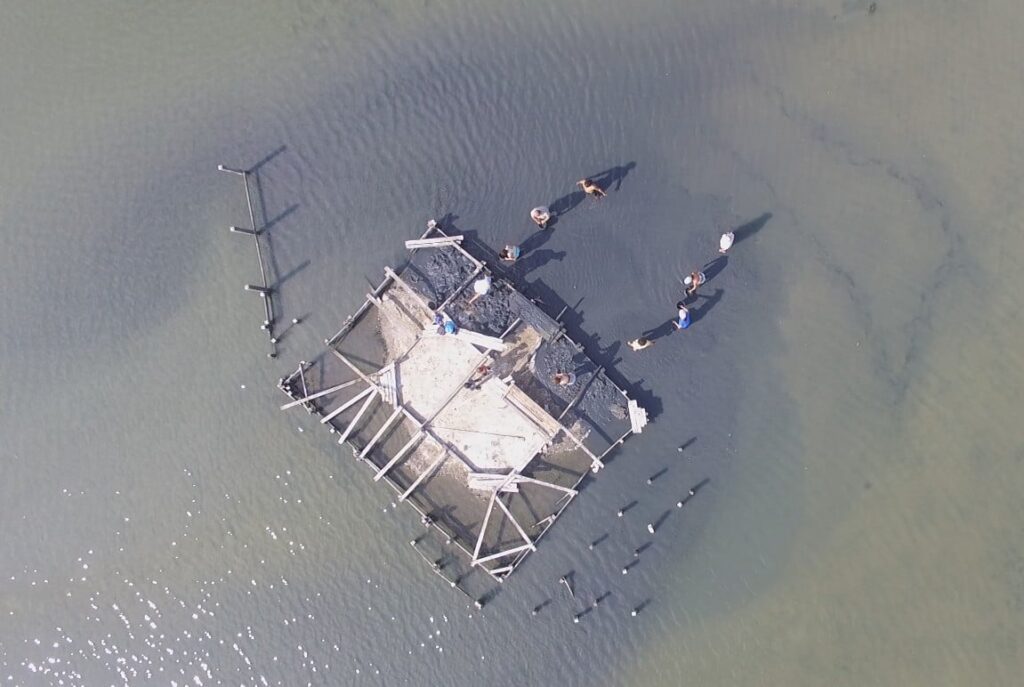At the very end of the year we are happy to share with you the year highlights of the rewilding efforts for Dalmatian pelican comeback along the Black-Sea Mediterranean Flyway. This year was quite active and exciting in all the involved countries and for all partners. A lot of activities from the scientific monitoring of the species to public events and volunteers camp took place in the region. Enjoy the details in the list below.
The Dalmatian pelican acts as an ambassador for a rich and interconnected wetland system in Europe. As an iconic indicator species, supporting the comeback of the Dalmatian pelican can indirectly help to restore vast swathes of wetland, lake and marshy habitat that is likely to have a positive ripple effect on a multitude of other species.
1. Dalmatian pelicans coordinated counts in the region.
The fourth Southeastern European Pelican Census took place on 15th May 2021. It aimed at gathering information about the number and distribution of the endangered species Dalmatian pelican and Great white pelican in the region. The event was coordinated by the Hellenic ornithological society (HOS). The counts were made simultaneously in Greece, Romania, Bulgaria, and Ukraine. Additionally, winter counts of Dalmatian pelicans were made in all the countries during December. The data is to be analyzed soon.
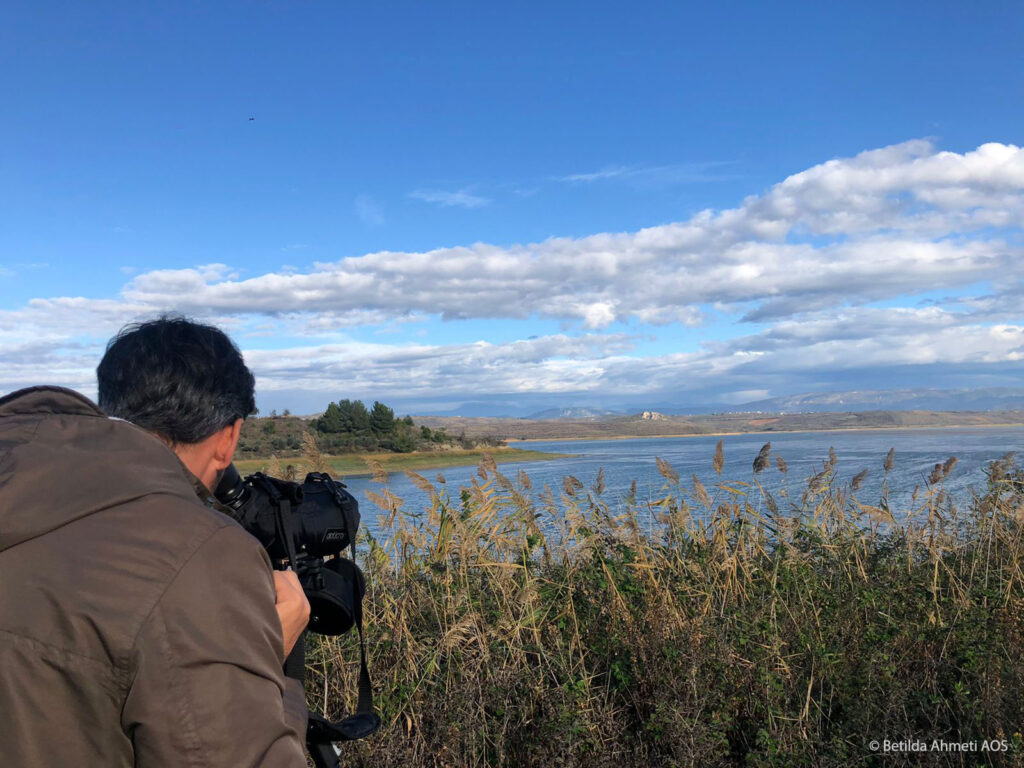
2. Few Dalmatian pelicans were tagged with satellite transmitters and color rings
In 2021 three birds were trapped and tagged with satellite transmitters: one pelican in Bulgaria, that was named “Maria” and two pelicans in Greece, named “Maestros” and “Anna”. We created an interactive map that shows the movements of the tagged birds across the continent. You can explore the map by the link. A few more young and adult Dalmatian pelicans were tagged with color rings in Romania and Bulgaria. The birds tagged by the Romanian Ornithological Society were noticed later in Ukraine. Satellite telemetry and marking the Dalmatian pelicans with color rings and wing tags help to collect information about movements, dispersal, and home range of the birds, as well as to monitor species survival rates, identify mortality factors, and more.
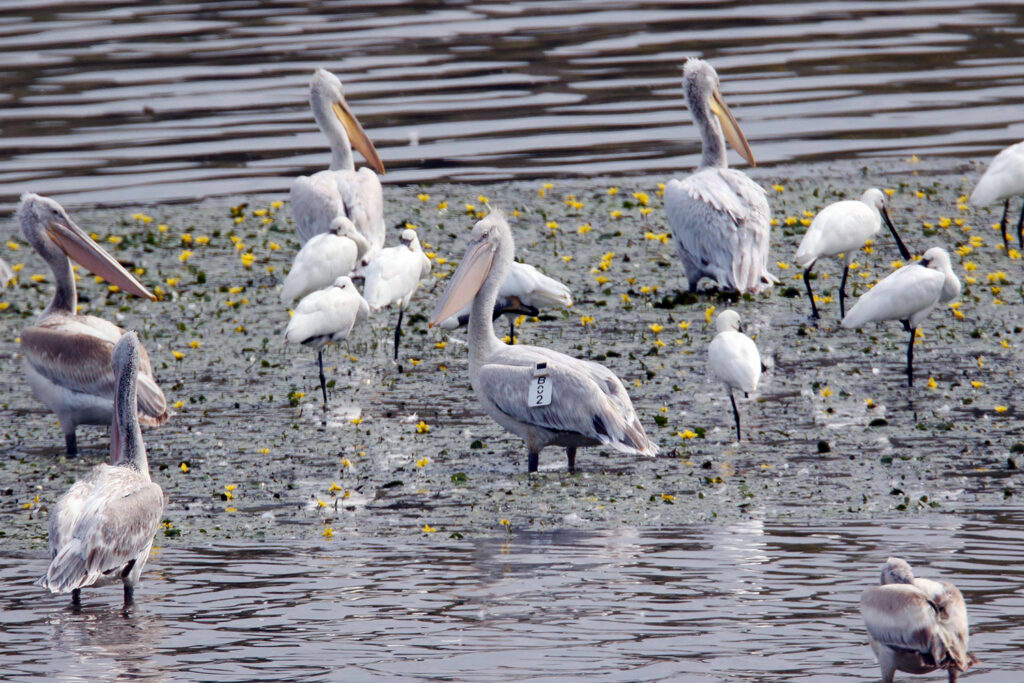
3. Breeding platforms for pelicans installed in the Danube Delta in Ukraine
In early June, two artificial breeding platforms for Dalmatian pelicans were installed by the Danube Biosphere Reserve and Rewilding Ukraine. They were assembled from floating blocks that were covered with a wooden deck. Before breeding, the platforms will be covered with reed to give them a more natural look. The platforms were installed in the coastal part of the Danube delta in the zone of strict protection of the Reserve. Such platforms are an effective tool to foster the establishment of the new breeding colonies of pelicans. Additionally, artificial figures of pelicans were made in Bulgaria and Ukraine to attract Dalmatian pelicans for nesting on the platforms.
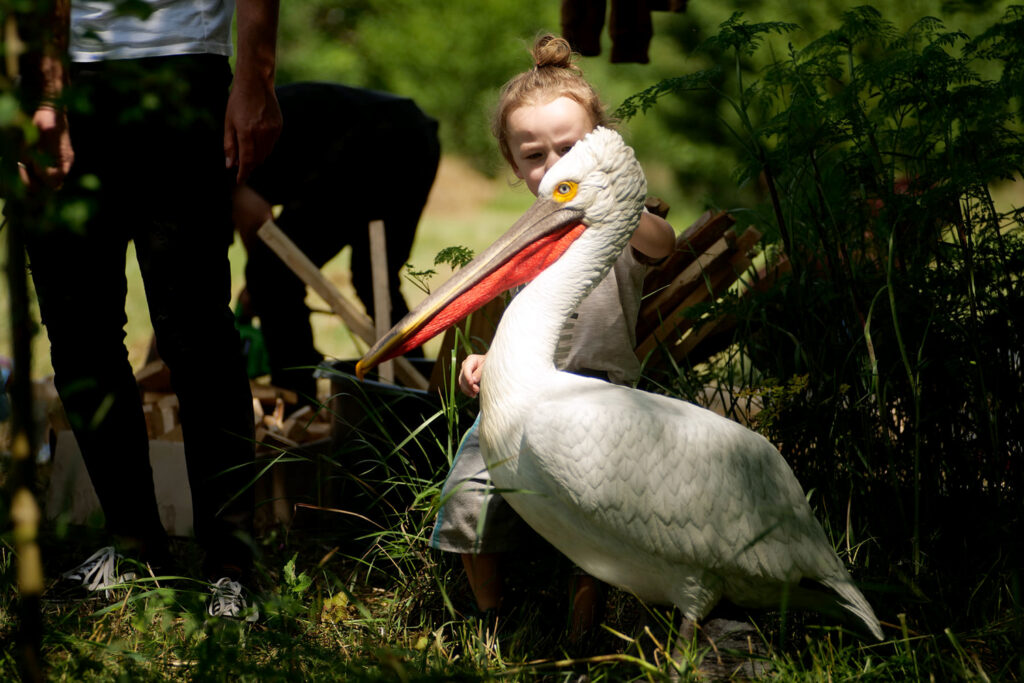
4. The first “Festival of the Dalmatian Pelican” took place in Bulgaria
The Return of the Pelicans was the topic of the first edition of the “Festival of the Dalmatian Pelican”, organized in July by Persina Nature Park Directorate. The Festival of the Dalmatian Pelican was planned as an informational and educational event with ecological themes, revealed through games, interactive exercises, workshops, lectures, and films. The purpose of the event was to increase public attention to the need to protect the Dalmatian pelican and to promote the return of pelicans as a nesting species in Persina Nature Park, mainly to deploy wide awareness and create an informed understanding of pelican’s conservation, engaging local audiences with the main problems for the protection of these specific birds.
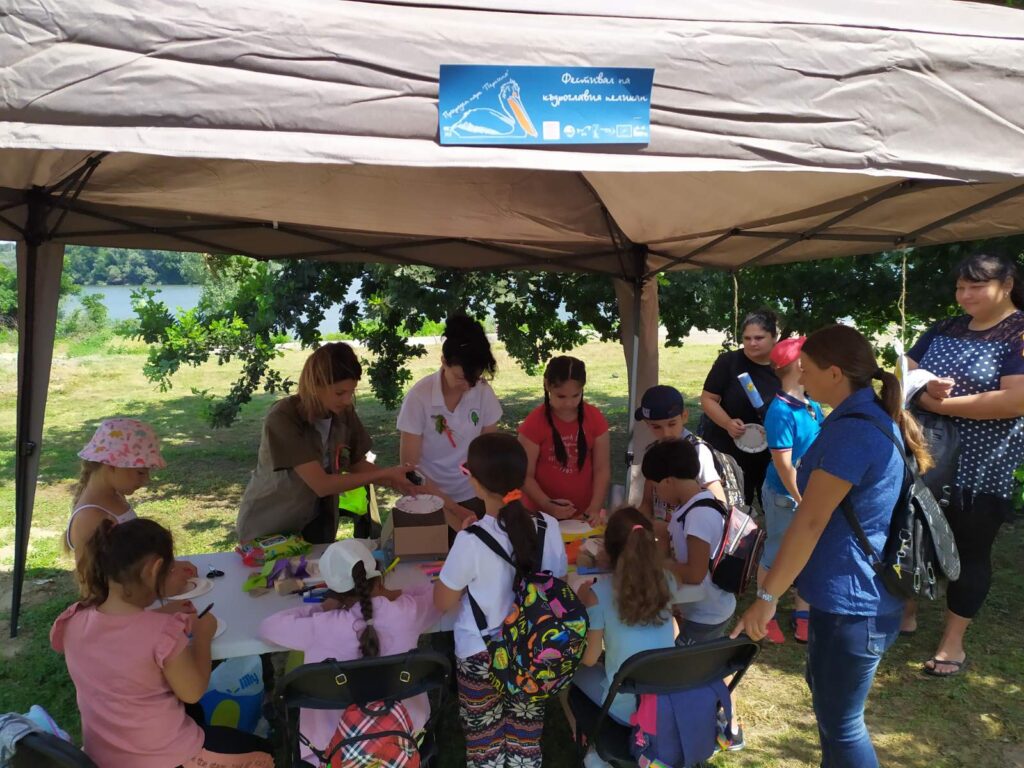
5. Stakeholders’ engagement and training in Romania and Bulgaria
In October the first boatman and guide training took place in Sfantu Gheorghe in Romania, organized by Rewilding Danube Delta. It aimed to develop proper standards and a code of conduct for boatmen and tourism activities in the area and promote correct guiding practices, and therefore reduce the impact on Dalmatian pelican and other birds. Moreover, in August the nature conservation brigade “Atanasovsko lake” gathered nearly 50 volunteers that helped the Bulgarian Society for the Protection of Birds to provide a better nesting environment for the birds in the area by maintaining and repairing the existing infrastructure.
